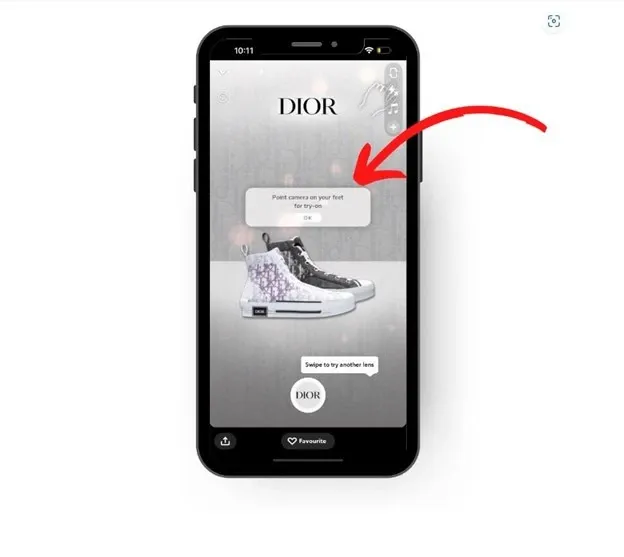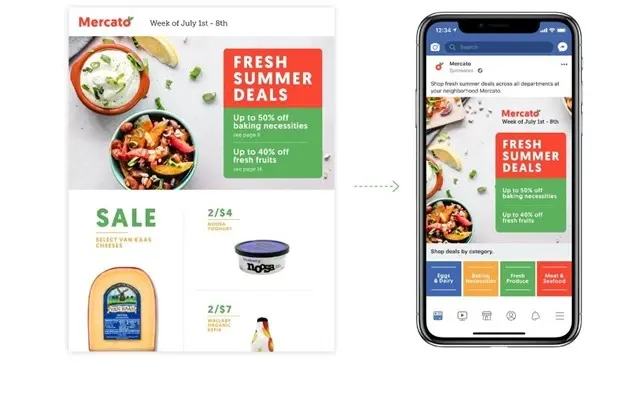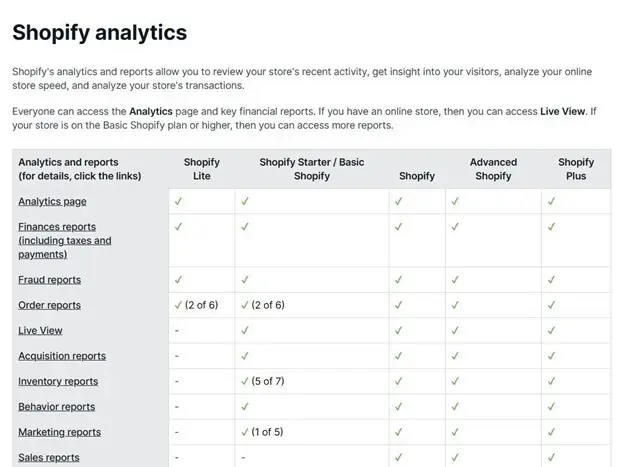10 Digital Shopper Marketing Trends and Tips for 2024
- Home
- Intelligent Insights Blog
- 10 Digital Shopper Marketing Trends and Tips for 2024
Shopper marketing is the art of persuading consumers right at the moment when they’re reaching for their wallets.
But today, shopper behaviors remain unpredictable. They’re often influenced by economic conditions, technological advances, and cultural shifts.
Plus, in highly competitive markets, the challenge of standing out is real. It takes innovative strategies to capture the attention of consumers.
Additionally, the rise of e-commerce and the integration of online and offline shopping have necessitated the need for multiple channels. Coordinating efforts across diverse touchpoints demands a strategic approach.
Keeping pace with evolving consumer preferences presents many challenges.
But staying up on the latest shopper marketing trends enables you to tailor your strategies to meet the ever-changing needs of shoppers. It also gives you a competitive advantage by enabling you to offer more relevant and appealing shopping experiences.
If you’re looking for the latest trends in shopper marketing, we’ve got 10 of them here.
Read on to find out which ones best fit your shopper marketing efforts.
Want to blend your shopper marketing and PR strategies for better results?
Let us help. Book a free consultation with one of our marketing and PR experts. We’ll take a look at your current strategy and see where you can benefit from adopting PR best practices.
Our Top Shopper Marketing Trends for 2024
- Public Relations (PR)
- Virtual Reality and Augmented Reality
- Omnichannel Marketing
- Digital Circulars
- AI-Driven Personalization
- E-commerce
- Data and Insights
- In-Store Technology
- Voice Commerce
- Content Marketing
1. Using PR to Increase Visibility and Sales
Why is PR one of the most important shopper marketing trends? It helps your brand steal the spotlight in every aisle. And it’s critical for creating and maintaining a positive public image.
In shopper marketing, PR often involves strategic communications to build consumer trust and promote unique selling points. This can include media coverage, influencer partnerships, and other forms of communication that shape consumers’ perceptions.
Media coverage and strategic messaging can also help you reach a broader audience. This increases your brand’s exposure and ensures that it remains top-of-mind.
Here are some of the main benefits of successful PR campaigns:
- Increased Customer Loyalty
- Increased Sales
- Increased Product Visibility
- Increased Brand Trust and Relevance
- Audience Engagement
- Positive Brand Image
To leverage PR, start by crafting compelling narratives that resonate with your target audience. Also, highlight what makes your products or shopping experience unique.
Reach out to journalists and influencers who align with your brand and market niche. A good fit is someone who tells or reports stories similar to yours. Make sure that your pitches are personalized, interesting, unique, and newsworthy.
Want to see how other brands are using PR as one of their shopper marketing trends? This press release example from Banana Republic demonstrates what first steps can look like:

Pro Tip: Shopper marketing should be sensitive to consumer perceptions. Be prepared for potential crises and negative feedback. Develop a crisis management strategy that allows you to address issues swiftly, transparently, and effectively.
Want to learn how to make PR part of your shopper marketing strategy? Check out our comprehensive guide: How to Write an Effective PR Plan [Tips + Examples]
2. Virtual Reality (VR) and Augmented Reality (AR)
VR and AR blend the lines between reality and imagination. VR immerses shoppers in a completely virtual environment, while AR overlays digital elements onto the real world.
VR and AR are one of the top shopper marketing trends because a large percentage of shoppers prefer to use VR and AR before making purchases.
These technologies allow shoppers to experience products in a more interactive and engaging way, making it easier for them to visualize products before purchasing them.
VR and AR can help increase the time shoppers spend interacting with products or services.
Plus, they reduce the likelihood of post-purchase dissatisfaction. This leads to lower return rates and happier customers.
Try using VR and AR apps such as Metadrob, Popular Studio, and Vue.ai. Ensure that the VR or AR experience is user-friendly and intuitive. Shoppers should find it easy to navigate and interact with virtual or augmented products.
Want to see how other brands are using VR and AR as one of their shopper marketing trends?
The example demonstrates how Dior is using AR and social media to allow potential customers to digitally try on sneakers:

Pro Tip: Create interactive and engaging experiences that allow shoppers to interact with products. This can include trying on virtual clothing like in the Dior example, exploring features of tech products, or virtually testing out cosmetics.
3. Omnichannel Marketing
Omnichannel marketing orchestrates the perfect shopping experience across every platform, leaving no channel unexplored. That’s what makes it one of the top shopper marketing trends for 2024.
It focuses on providing a seamless and consistent shopping experience across multiple channels. This includes online and physical stores. It ensures that customers can shop wherever they prefer, making it easier for you to reach shoppers at various touchpoints.
Omnichannel marketing also helps create a consistent and integrated presence across channels. As a result, shoppers are more likely to make repeat purchases.
To leverage omnichannel marketing, create a seamless transition for shoppers as they move from one channel to another. Make it easy for them to pick up where they left off. This includes adding items to a cart online and purchasing them in-store.
The video below provides examples of omnichannel marketing and demonstrates how it’s one of the leading shopper marketing trends:
Pro Tip: Integrate data from different channels to gain a holistic view of customer behavior. Use this data to personalize marketing efforts and improve the overall shopping experience.
A cohesive digital marketing strategy is how you stay consistent across online channels. Want to learn more? Read here: 15 Digital Marketing Trends Worth Your Attention in 2024
4. Digital Circulars
Forget the days of old-fashioned paper flyers. Digital circulars are online versions of traditional print circulars or flyers.
Digital circulars allow you to showcase promotions and discounts. They also target shoppers with personalized offers and make it easier for them to discover deals.
Digital circulars are one of the top digital shopper marketing trends because they are more cost-effective than traditional printed materials.
This makes it easier to promote products and services. Plus, digital circulars are environmentally friendly. They reduce the need for paper and print materials, which aligns with sustainability goals.
When using digital circulars, customize them based on shopper preferences and purchase history. Tailor the promotions and offers to match what each shopper is likely to be interested in.
Include interactive elements within digital circulars. This can include clickable links, videos, or interactive product displays. This keeps shoppers engaged and encourages them to explore the promotions further.
The example below shows what digital circulars look like and how they’re among the top shopper marketing trends:

Pro Tip: Make sure digital circulars are mobile-friendly and easy to navigate. Shoppers should have a seamless experience when viewing them on their mobile devices.
Interested in upping your mobile marketing game? Then you’ll want to check out our article: 8 Mobile Marketing Trends to Upgrade Your Strategy in 2024
5. AI-Driven Personalization
With artificial intelligence (AI), the algorithms know shoppers’ interests better than they do. That’s because AI can analyze shopper data and behaviors.
But why is AI one of the top shopper marketing trends? How does it benefit you?
The data that you get from AI allows you to create personalized marketing messages, recommendations, and offers. This enhances the relevance of your marketing efforts, increasing the likelihood of conversion.
AI-driven personalization can also reduce the time shoppers spend searching for products. This increases customer satisfaction and loyalty.
So, how do you integrate AI personalization as one of your 2024 shopper marketing trends?
Use AI to personalize content and product recommendations in real-time. Shoppers should see personalized offers and product suggestions as they browse.
The good news is that AI is showing up as a built-in element of more tools than ever before. So, look for solutions that offer it. Alternatively, you can build your own recommender system into your online store if you don’t already have one.
Also, continuously test different personalization strategies and algorithms to optimize their effectiveness. AI can help you analyze the results and adapt your strategies based on what works best.
Pro Tip: Be transparent with shoppers about how their data is being used for personalization. Ensure you have data privacy measures in place to protect shopper information and build trust.
6. E-commerce as a Shopper Marketing Channel
Most consumers now shop online. Statistics show that three out of four shoppers make online purchases every month.
That’s why e-commerce marketing is now one of the top digital shopper marketing trends.
Shopper marketing is all about influencing a buyer during the moment of truth – while they are in the act of shopping. So, it’s obvious that you need to do marketing on your site as shoppers shop.
But what does that look like?
First, you need to make sure the act of making a purchase is easy for the buyer. Online that equates to a smooth user experience. Your buyer’s journey and checkout process should be as simple and easy as making a few clicks.
Next, you want to make sure that buyer’s have all the information they need to make purchasing decisions on the spot. To do that, you’ll want to optimize your product pages. Don’t forget to write compelling and original content. You’ll want to include:
- Title
- Detailed Product Description
- Images / Video
- Price / Promos
- CTA Button
- Reviews / Testimonials
- Other Relevant Info – e.g., Shipping Information
Now, creating detailed product pages is difficult for sites that have lots of products or automatically generate product pages. While time consuming and difficult, creating unique, useful content is extremely important for the shopper experience.
The added benefit is that it’s great for SEO. Optimizing for search engines will also allow you to hit shoppers at the discovery stage.
Here’s an example of a product description for Sea Salt and Paper, a board game on Zatu games. Zatu’s product pages not only have in-depth descriptions, they also include:
- Video Reviews
- Zatu’s Game Review
- Buyer Reviews
- Related Products
- Game Awards
- Testimonials
- Great Product Images

Pro Tip: Zatu’s product description is 348 words. For SEO, a good product description should be between 300-400 words. Enough content to convey the benefits and features of the product to the buyer. Zatu’s use of images, video, and UGC is also great for search engine optimization.
Interested in SEO? Want to know how to blend your PR and SEO efforts for better results? Learn more here: PR SEO: Synergy for Success [Tips, Tactics, and Best Practices]
7. Data and Insights
If you’re looking to decode customer behaviors, data and insights are the way to go.
Collecting and analyzing data on shopper behavior and preferences helps in understanding your target audience. This can help you optimize marketing campaigns and make other data-driven decisions.
Plus, data insights can help you reduce wasted resources and improve your return on investment.
Focus on collecting data that provides actionable insights. Know what you want to learn and collect data that will help you make informed marketing decisions.
Use tracking tools and point-of-sale (POS) systems to gather purchase data and customer behavior metrics. Some popular tools include Shopify POS, Stackline, and Triple Whale.
Continuously analyze and interpret data to identify trends and patterns. Use this information to adjust marketing strategies in real-time for optimal results.
Want to know what makes data and insights one of the top shopper marketing trends? This example from Shopify provides a snapshot of how it’s used:

Pro Tip: Integrate data from various channels to create a comprehensive view of the shopper’s journey. This helps in understanding how different touchpoints influence purchasing decisions.
8. In-Store Technology
Technology isn’t just confined to the Internet. Now, you can power your brick-and-mortar location with the latest technology as well. That’s what makes in-store tech one of the top, current shopper marketing trends this year.
Incorporating technology into physical stores enhances the shopping experience. Some examples include interactive displays, digital signage, and mobile apps. These provide shoppers with real-time information and assistance while they shop.
In-store technology can collect valuable data on shopper behavior. This can enable you to make data-driven decisions.
Ensure that in-store technology seamlessly integrates with the overall shopping experience. It should enhance, not disrupt, the traditional in-store experience.
Train store staff to assist shoppers in using in-store technology. They should be knowledgeable and able to help customers navigate any tech features.
The video below demonstrates how Stop & Shop has adopted in-store technology as one of its most current shopper marketing trends:
Pro Tip: Use in-store technology for interactive product demos and information. It should provide value to shoppers by offering additional product insights or even a fun experience.
Want to know what other marketing technology is hot for 2024? Check out our article: 8 Marketing Technology Trends That Can Supercharge Your Marketing Efforts
9. Tapping into Voice Commerce
With voice commerce, shoppers only have to say the word and their shopping desires are fulfilled. Voice commerce allows shoppers to make purchases using voice-activated devices such as smart speakers.
Voice commerce allows for hands-free shopping. This makes it convenient for shoppers who multitask or prefer a touchless experience.
Plus, voice commerce is accessible to a wide range of users, including those with disabilities. This improves inclusivity in shopper marketing.
To implement voice commerce, optimize your product listings and content for voice search. Ensure that your products are easily discoverable when shoppers use voice-activated devices.
Also, create a system that responds effectively to clear and natural voice commands.
How is voice commerce one of the leading shopper marketing trends?
Here is a prime example of how to use it:
Pro Tip: Consider developing voice-activated shopping assistants or chatbots. Program them to guide users through the shopping process and answer product-related questions. Also, provide information about promotions or discounts.
10. Content Marketing is Still King
Content Marketing isn’t just one of the top digital shopper marketing trends, it’s one of the top digital marketing trends.
Content marketing weaves products and services into engaging narratives.
It involves creating articles, videos, blog posts, and social media posts that communicate together. In shopper marketing, this content educates and engages shoppers. It provides valuable information that can influence their purchasing decisions.
High-quality content engages shoppers and builds brand loyalty. Customers appreciate brands that provide them with helpful content.
Try offering how-to guides, product comparisons, and expert advice that helps shoppers make informed decisions.
Use storytelling to create emotional connections between shoppers and your products. Share real-life stories and experiences that resonate with your target audience.
Need an example that proves how content marketing is one of the top shopper marketing trends? Check out this blog article on Shopify about shopper spending:

Pro Tip: Maintain a consistent content publishing schedule. Regularly update your blog, social media, or other content platforms to keep shoppers engaged. Posting great content consistently helps steadily increase your reach, traffic, and rankings.
Want to know the latest content marketing trends? We’ve got you covered! Read more here: 7 Top Content Marketing Trends 2024 [+ Tips and Tricks]
Key Takeaways on the Latest Shopper Marketing Trends
Shopper marketing is all about persuading consumers at the crucial moment of purchase. It’s about understanding unpredictable shopper behaviors influenced by various factors.
In highly competitive markets, capturing consumers’ attention requires innovative strategies to stand out. It’s important to stay updated on the latest shopper marketing trends to best use your marketing resources and deliver more appealing shopping experiences.
It’s also important to explore innovative ways to leverage emerging technologies to capture shoppers’ attention. Keep an eye on these tech-driven digital shopper marketing trends to gain a competitive advantage.
Still not sure how to integrate these trends for your business? Let us help! Simply book a free consultation to get expert insight into how you can refresh your PR and marketing strategies.

